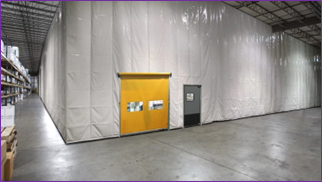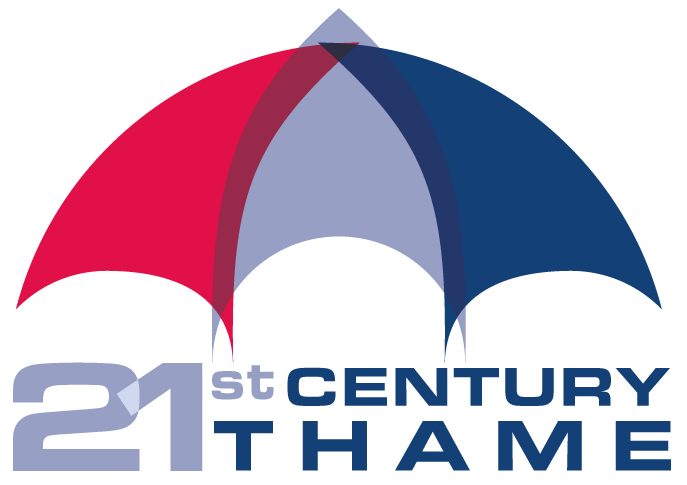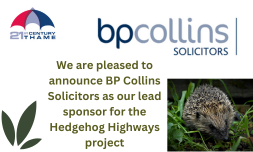
21st Century Thame have been connecting with the local businesses in Thame and finding out what changes they’ve made in their business to reduce carbon emissions, reduce waste and increase bio-diversity.
Ben Rose from Kubota tells us the changes they’ve made since 2019.
Energy savings – Warehouse insulation wall
In 2021 the warehouse and assembly areas of the business was sectioned off using a floor to ceiling insulation wall specifically designed to keep heat in the local area. Previously, due to the large open space of the building, the high-level gas heating system had to work at near capacity to keep the areas warm during the cold months. The installation of the new wall, as well as new auto closing roller doors leading to from outside to the assembly area, reduced the need for the heaters to be on at full capacity all day whilst also improving the comfort of those working in the area. As such we have seen an approximate 20% reduction of energy used to heat these areas.

LED Lighting
The business has gone through some major refurbishments over the last 8-10 years. As part of each refurbishment project it was decided that all existing lighting would be replaced with PIR controlled LED lighting systems. To date, approximately 90% of all buildings have gone through some form of refurbishment that involved changing of lighting systems and we have seen an approximate drop of 70% in energy usage within those areas.
EV Company Vehicles and Charging
In 2021 the business installed fourteen EV charging points for use by staff and visitors with company and private vehicles. As part of the set up and to encourage their use the charging costs are subsidised by the business with current charging costs set at 10p per Kwh as opposed to the 17p per KwH charged to the business. This has encouraged not only the business to switch its fleet of company cars to plug-in hybrid types (43 of 45 switched to date) but also a number of staff have made the change to electric or hybrid charging now the facility to do so is at the workplace.
Printing Reduction
During 2021 and 2022 two projects were completed that looked at how to reduce both mono and colour printing within the business. In 2021 the project focused on reducing the overall quantity of printing by 60% of 2019’s performance. To achieve this the business looked at three key elements of the day-to-day business operations.
(Note: 2020 was removed from any performance data or considerations due to the pandemic.)
Process management
Working with stakeholders to identify the tasks and procedures that generated the most amount of printing. Where printing was completed unnecessarily, we changed the process where we could to remove the need for printing completely. Mostly this was found to be antiquated processes that required the printing of documents for auditing/archiving purposes. As well as process changes, we also ran staff training on creating, handling, and storing digital documents – notably PDFs.
Introduction of digital signatures
Two different methods of adding digital signature images to documents was developed and launched to all staff. This included the ability to sign both PDFs and Word documents.
Improved reporting
Prior to 2021 there was no reporting completed in the business on printing performance, so we introduced monthly reporting on the project progress and the volume of printing being completed within each department. This ensured that staff began to understand how much printing was actually being performed. It also had the effect that departments began to compete with each other to become the most improved.
The 2022 project focused on reducing colour printing based on 2021’s performance. Unlike the 2021 project, this was less of a reduction in printing overall but more a replacement of colour to mono. At the end of the year we had reduced colour printing by 77%. To achieve this the business looked at a number of key elements.
- Monitoring software – introducing new software to staff machines that both monitored performance at user level (previously only possible at department level) and had the functionality to block colour printing, as well as displaying warnings to users about the need for colour printing whilst requesting users record a note as to why the job needs to be colour.
- Process reviews – In a similar manner as the previous project, individual users had interviews with the project team to help identify their printing needs and implement improvements or changes to their current processes to remove the need for colour printing.
SO TO THE FUTURE …..
Recycling printing cartridges
Whilst reviewing the printing generally, in April 2023 an initiative was begun to find ways to better handle the disposal and recycling of printer/toner cartridges. Both those consumed at the office or by those working at home. A few options have been considered, notably, there are several companies that offer to collect empty cartridges/toners on a scheduled basis free of charge.
Improving waste segregation
Traditionally the business has not always been the best at segregating waste resulting in some recyclable materials sent for incineration. This is a focus for 2023 to look for ideas and opportunities to improve. This must also include improved reporting from Kubota and our suppliers to better understand the current situation and where improvements can be gained.
Author : Ben Rose of Kubota May 2023
The Thame Business Initiative is a 21st Century Thame project started January 2023).
It’s aim is to engage businesses in the sustainability discussion in 3 ways :
- to showcase what they are already doing and what they are aiming to do,
- to encourage their employees to be involved in local sustainability initiatives and
- to encourage the business to help fund projects being run by the community.

The project has initially been funded by SODC via a South Oxfordshire District Council Councillor Grant 2023.

Lightfoots Solicitors have kindly supported this project to enable us to continue the work further into 2023.




